Getting behind the wheel for the first time is an exciting moment. Many people feel nervous when they sit in the driver’s seat, but don’t worry every skilled driver once started as a beginner. Before you even move the car, it is very important to know the basics. In this guide, we’ll take you step by step through the parts of the car you should know before driving. Think of this as your introduction to beginner driving lessons.
Why Knowing Your Car is Important
Before learning how to drive, you should feel comfortable inside the car. Imagine being in an unfamiliar place with lots of switches and buttons it can be confusing. If you understand your car’s controls, you can focus on driving instead of searching for buttons while on the road.
Knowing your car also makes you safer. For example, if you know where the hazard lights are, you can use them quickly during an emergency.
The Driver’s Seat – Your Main Place
The first thing you should learn is how to sit properly in the driver’s seat. Adjusting your seat gives you comfort and control.
Seat Adjustment: Move the seat forward or backward so your feet can reach the pedals easily.
Seat Height: In some cars, you can raise or lower the seat for better visibility.
Backrest: Adjust the backrest so you sit upright, not leaning too far back.
Headrest: The top of the headrest should be close to the top of your head to protect your neck in case of sudden stops.

The Steering Wheel
The steering wheel controls the direction of your car. Hold it with both hands in a “9 and 3” position (like a clock). Most steering wheels also have extra buttons for controlling music, phone, or cruise control.
Horn: Usually in the center, press it to warn other drivers.
Steering Adjustment: Some cars allow you to move the wheel up or down.
Dashboard and Instrument Panel
The dashboard is like the car’s information center. When you switch on the car, lights and gauges appear.
Here are the important ones:
Speedometer: Shows how fast you are going.
Tachometer (in some cars): Shows engine speed in revolutions per minute (RPM).
Fuel Gauge: Tells you how much petrol or diesel is left.
Temperature Gauge: Indicates engine temperature.
Warning Lights: Such as seatbelt, engine check, oil pressure, and battery.
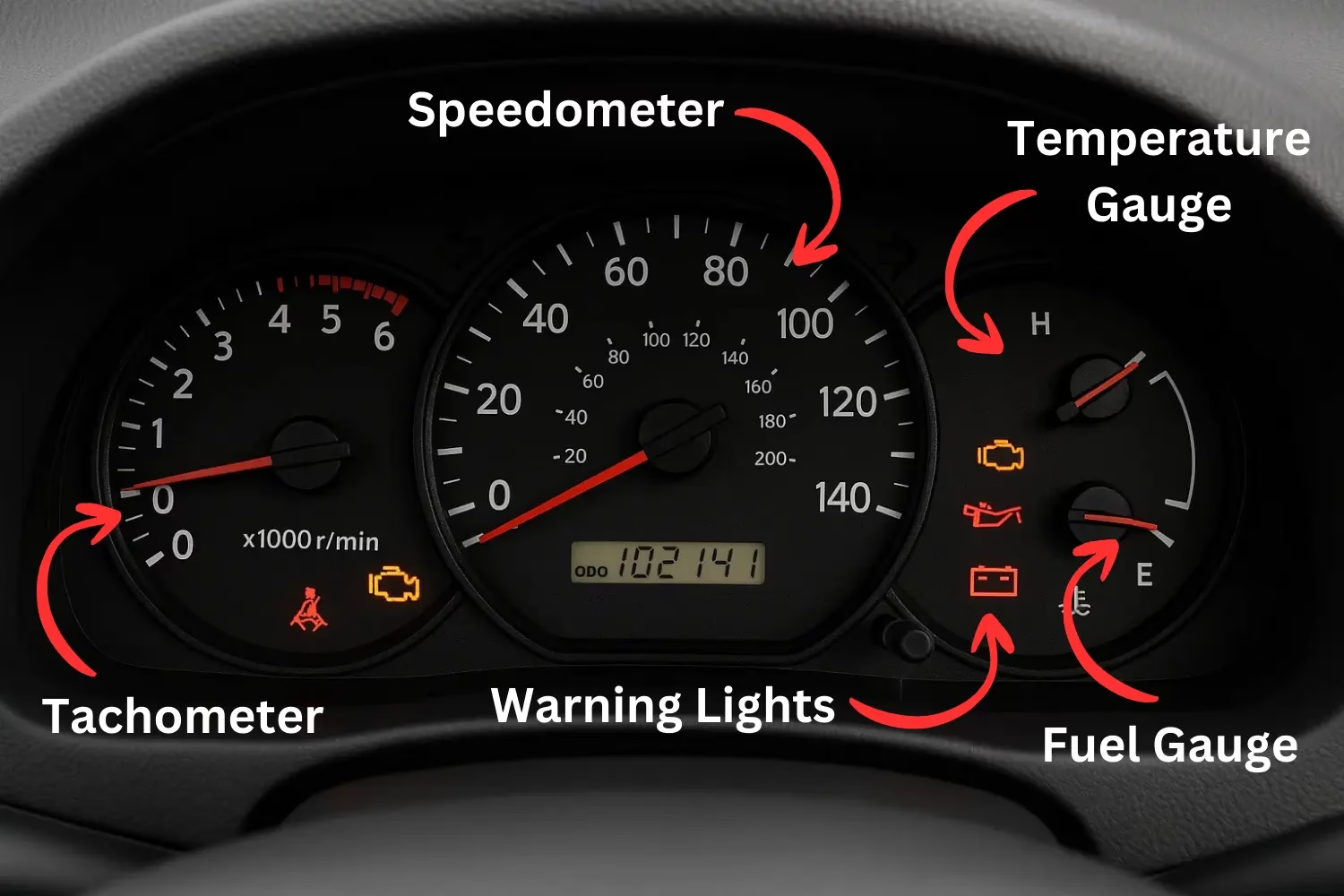
Pedals (For Manual and Automatic Cars)
Pedals are the most important part to learn before starting driving lessons.
In Automatic Cars (2 Pedals):
Accelerator (Right side): Press gently to move the car forward.
Brake (Left side): Press to slow down or stop.
In Manual Cars (3 Pedals):
Clutch (Far Left): Used to change gears.
Brake (Middle): Used to stop the car.
Accelerator (Far Right): Used to speed up.
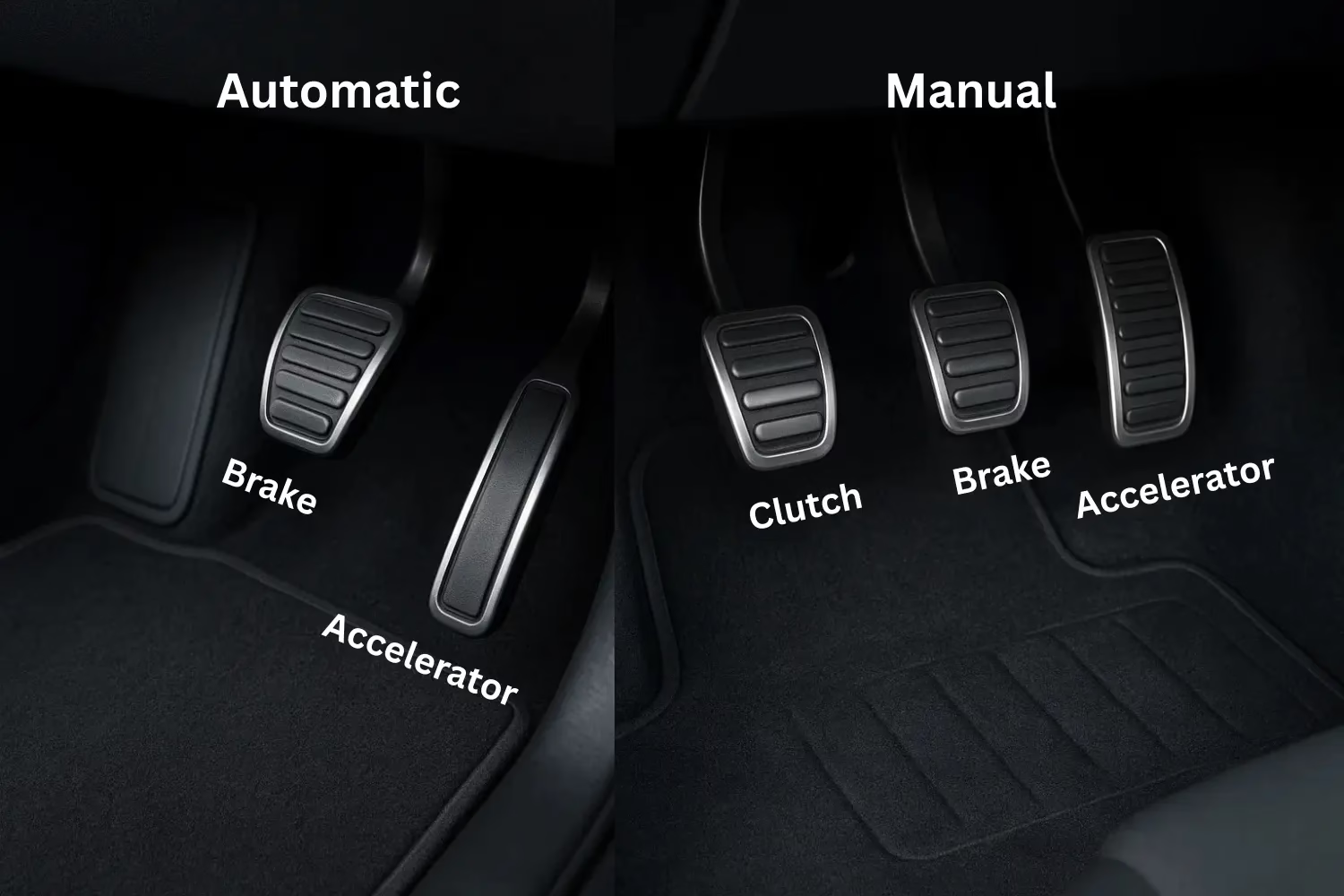
Handbrake or Parking Brake
The handbrake keeps the car from rolling when parked. In older cars, it is a lever between the seats. In newer cars, it might be a small button. Always use it when you park.
Gear System
Automatic Cars:
The gear lever usually has letters like P (Park), R (Reverse), N (Neutral), D (Drive). Some cars also have “+/-” for manual shifting.
Manual Cars:
The gear stick usually has numbers (1–5 or 6) plus R for Reverse. You must press the clutch pedal while changing gears.
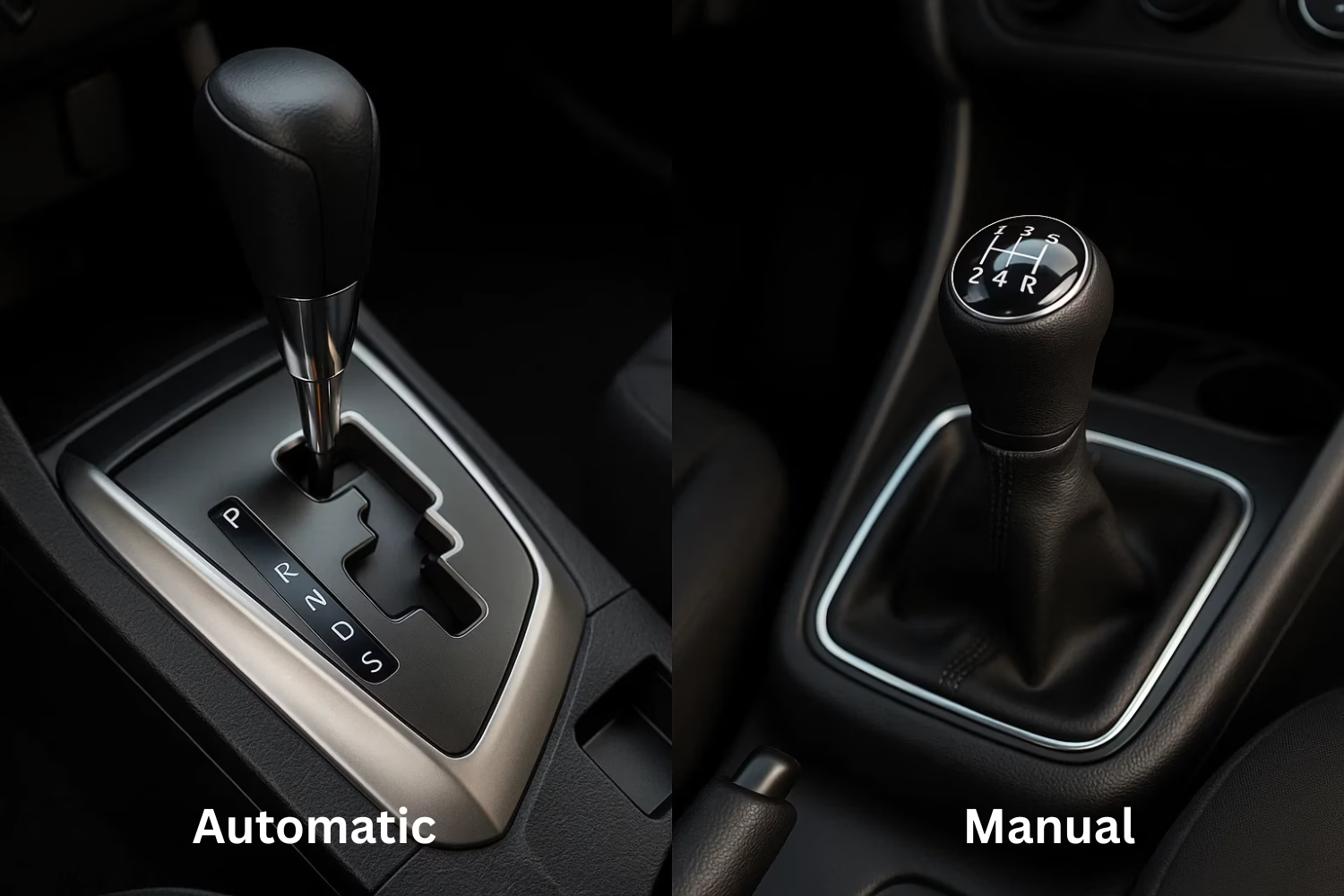
Mirrors – Your Extra Eyes
Mirrors help you see around the car. Adjust them before driving:
Rearview Mirror: Inside the car, shows what’s behind you.
Side Mirrors: Show the left and right sides of the car.
Tip: Make sure you can see a small part of your car in each side mirror for better judgment.
Indicators and Lights
Lights and indicators are usually controlled by stalks behind the steering wheel.
Indicators (Turn Signals): Move the lever up or down to signal left or right.
Headlights: Switch between low beam and high beam for night driving.
Fog Lights: Used in heavy fog or rain.
Hazard Lights: Flash all indicators at once in case of emergency.
Air Conditioning and Heating
Learning to control air vents helps you stay comfortable. You can adjust:
Temperature (hot or cold)
Fan Speed
Air Direction (windshield, face, or feet)
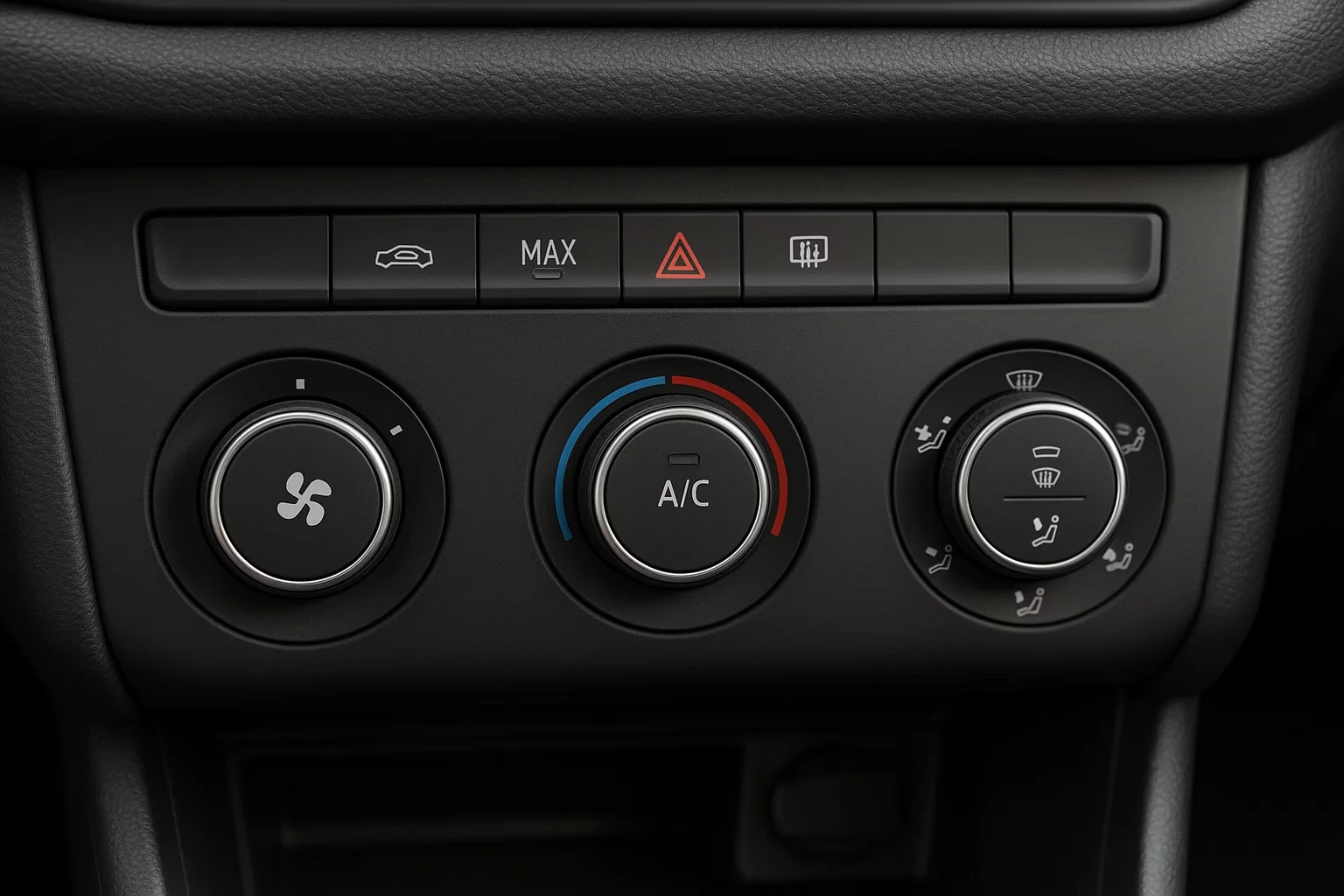
Wipers and Washers
Wipers are used during rain to keep the windshield clear. The same stalk often controls washers (spray water to clean the glass).
Seatbelts
Always wear your seatbelt before starting the car. It is the most basic safety rule. In most countries, it is also the law.
Final Tips for Beginners
Don’t rush — take time to get used to controls.
Always keep both hands on the steering wheel.
Never drive without a seatbelt.
Ask your instructor questions if you are unsure.
Practice in a safe, quiet area before going on busy roads.
Your first time behind the wheel is a special moment. Before moving the car, knowing the basic parts, buttons, and mechanisms will make you more confident. Once you understand the steering wheel, pedals, gears, mirrors, and dashboard, you can focus on learning real driving skills.
Discover more from SMOOTHSTEERING
Subscribe to get the latest posts sent to your email.

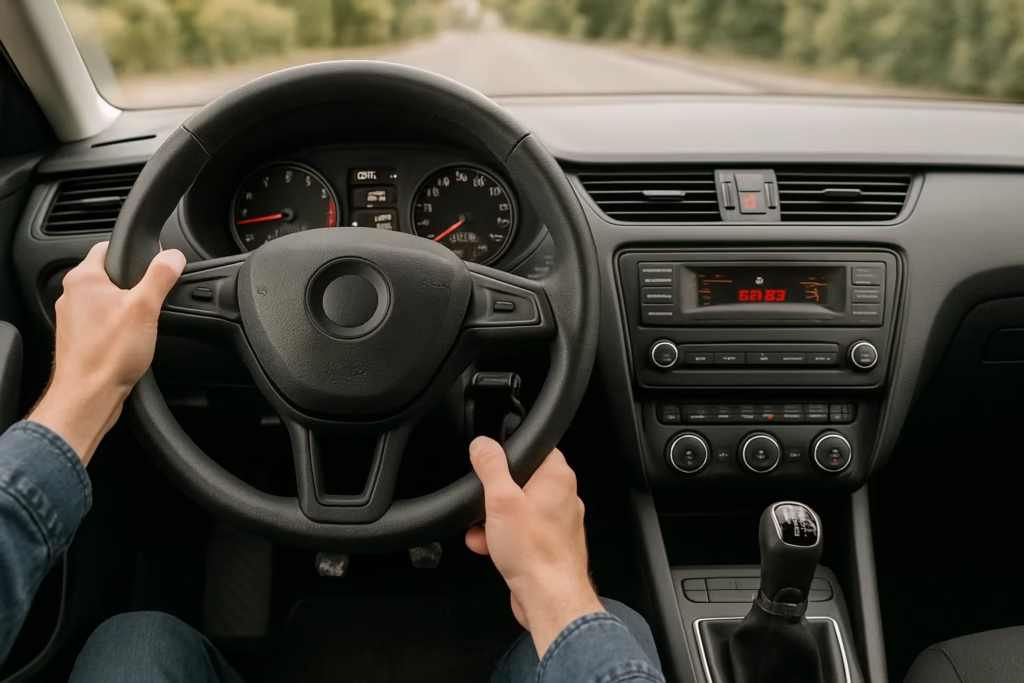
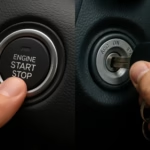
Pingback: How to Start a Car Correctly (Manual & Automatic)
Pingback: Understanding the Car Dashboard and Controls
Pingback: Basic Clutch Control for Beginners (Manual Cars)
Pingback: How to Move Off and Stop Safely (Learner Driver Guide)
Pingback: Beginner’s Guide to Steering Control
Pingback: Top Safety Rules Every New Driver Must Know